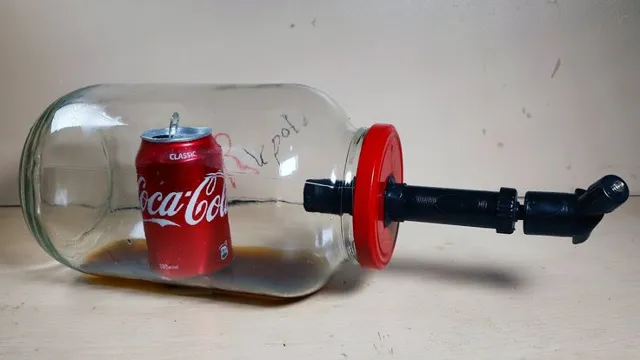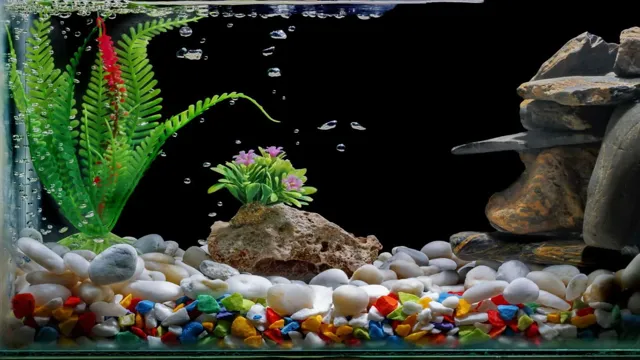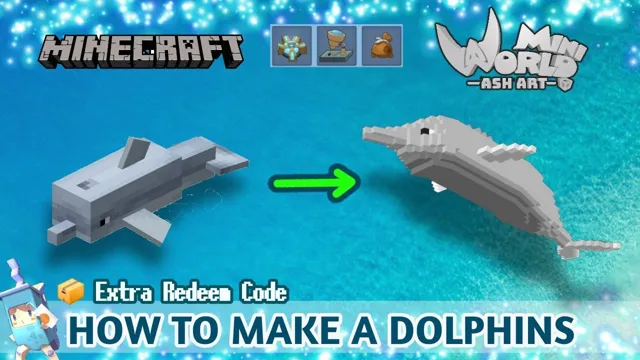If you are a proud aquarium owner, you must know the importance of keeping the tank clean and healthy for your aquatic pets. Maintaining a clean aquarium not only ensures the health of your fish but also enhances the beauty of your tank. One of the essential tools for aquarium maintenance is an aquarium vacuum.
It helps to clean the debris and waste from the bottom of the tank without disturbing the fish or the plants. However, many beginners face difficulty in creating suction with an aquarium vacuum. It may seem like a complicated task, but it is relatively easy once you get the hang of it.
In this blog, we will guide you through the steps to create suction with an aquarium vacuum and provide some tips for efficient cleaning. We understand that getting started with a new aquarium can be overwhelming, but don’t worry, we have got you covered. By the end of this blog, you will be a pro at using an aquarium vacuum and maintaining a clean and healthy aquarium for your aquatic pets.
Let’s dive in!
Gather Necessary Materials
To create suction with an aquarium vacuum, you will need a few necessary materials. The first item you need is an aquarium vacuum. You can purchase these at any pet store or online.
Next, you need a long hose that attaches to the vacuum. Make sure the hose is long enough to reach the bottom of your tank. You will also need a bucket to collect the debris and water the vacuum will suck from the tank.
Place the bucket lower than the tank to ensure the water can flow downward. Lastly, you will need to have your aquarium ready for cleaning by turning off all equipment and removing any decorations or plants that may get in the way. With these essential materials in place, you are ready to create suction and clean your tank effortlessly.
Aquarium Vacuum
If you have an aquarium at your home, you know how crucial it is to keep it clean and well-maintained to ensure the health of your fish or other aquatic creatures. One of the essential tools required for cleaning an aquarium is an aquarium vacuum. To start cleaning, you must gather a few necessary materials.
First, you will need an aquarium vacuum, which comprises a siphon or a tube that sucks out the debris and dirty water from the gravel or sand bottom of your aquarium. Next, you will need a bucket or any other container to collect the dirty water, a hose to connect the siphon and the container and a long stick to reach the corners of your aquarium. A good-quality aquarium vacuum should have adjustable suction to customize the cleaning for different types of debris.
Before you start using the aquarium vacuum, fill a container with fresh water to replace the dirty water and remove harmful chemicals, which will ultimately keep the aquarium healthy. With these tools on hand, you are now ready to clean your aquarium like a pro.

Flexible Hose
When it comes to selecting materials for your flexible hose project, there are a few key things to consider. First and foremost, you’ll need to decide on the appropriate hose material, taking into account things like the temperature and pressure your hose will need to withstand. Additionally, it’s important to select the right fittings to ensure a secure, leak-free connection.
Depending on your specific needs, you may also opt for accessories like clamps, gaskets, and adapters. Don’t forget to consider the flexibility of your hose, as well – after all, that’s what it’s designed for! By gathering all of the necessary materials up front and paying attention to the small details, you can ensure that your flexible hose will perform efficiently and effectively, no matter what your application requires.
Bucket
Are you planning to organize a picnic with your friends or family? Don’t forget to bring a bucket to carry all your essentials. But what exactly do you need to gather before you pack up and head out? Let’s start with the basics. First and foremost, you’ll need a sturdy and spacious bucket.
Look for options made of durable materials such as plastic or metal. Next, consider what you’ll be using the bucket for. If it’s for carrying food, remember to bring along reusable containers to store each dish separately. (See Also: How to Cure Aquarium Silicone Faster: Tips and Tricks to Speed up the Process)
Don’t forget to pack plates, utensils, cups, and napkins too. For drinks, grab a cooler or insulated bag and fill it with ice to keep everything chilled. Sunscreen, bug spray, and a first aid kit are also essential items to pack in your bucket.
By gathering all the necessary materials, your picnic will be carefree and enjoyable for all.
Attach Hose to Vacuum
When it comes to cleaning your aquarium, a vacuum can make the job a lot easier, but creating suction can seem like a daunting task. One of the first steps involved is attaching the hose to the vacuum. Most aquarium vacuums come with attachments that are designed to fit snugly onto the end of the hose.
The key is to ensure that the attachment is fitted properly and securely onto the end of the hose. Once that’s done, submerge the vacuum attachment into the aquarium water, allowing the water to fill up the hose. Then, give the hose a quick shake to help the water flow freely through the tube.
This will create the suction needed to begin cleaning your aquarium. That’s it – with these simple steps you’re now ready to give your aquarium a thorough cleaning!
Prepare the Bucket
To create suction with an aquarium vacuum, you first need to prepare the bucket. This is an important step in the process because it will help ensure that the vacuum works effectively. Firstly, you need to fill the bucket with water up to a certain level, depending on the size of your aquarium.
You should aim to fill the bucket with enough water to cover the vacuum head, so that the vacuum can easily suck up debris from the bottom of the tank. It’s essential to use dechlorinated water to fill your bucket. Otherwise, you could harm your aquarium’s inhabitants if you accidentally introduce chlorine into the tank.
Once you’ve filled the bucket, you can then attach the aquarium vacuum. Ensure that all connections are secure, and check the vacuum’s instructions to see how best to use it. By preparing the bucket correctly, you will create a smooth suction process, enabling you to keep your aquarium clean and your fish happy.
Fill Bucket with Water
Preparing a bucket to fill with water might seem like a simple task, but there are a few things to keep in mind to make sure you get the best results. First, choose a bucket that is the appropriate size for your needs. Too small and you’ll be making multiple trips, too large and it may become too heavy to carry.
Next, ensure the bucket is clean and free from any debris or contaminants that could affect the quality of the water. If necessary, give it a quick rinse before filling it up. Finally, make sure the bucket is stable and secure in its position before starting to fill it up.
This will prevent any spills or accidents and make sure you get the most water in the bucket without any wasted drops. By taking these simple steps, you’ll be able to prepare your bucket and fill it up with water efficiently and effectively.
Submerge Vacuum
If you’re looking to create suction with an aquarium vacuum, one easy method is submerging the vacuum into the water. The water pressure around the vacuum will cause suction to occur, allowing you to easily clean out debris or waste from your aquarium. However, it’s important to make sure the vacuum is completely submerged before starting to use it.
If air is trapped inside the vacuum, it can prevent suction from occurring properly. Additionally, be sure to follow any specific instructions or recommendations provided by your vacuum’s manufacturer to ensure you’re using it safely and effectively. By using this simple technique, you’ll be able to easily maintain a clean and healthy aquarium for your fish and other aquatic creatures. (See Also: How to Grow Algae Fast in Aquarium: Quick and Effective Techniques)
Hold Vacuum below water line
To get an effective clean below the water line, it is important to submerge your vacuum below that line. This means that the vacuum should be completely underwater before you begin suctioning. This helps to ensure that you are removing all the debris and dirt that may be hiding in the nooks and crannies of your pool.
Holding the vacuum below the water line helps to create a seal that prevents air from entering the hose. If air enters the hose, the vacuum will lose suction power, making it less effective at cleaning the pool. So, make sure to fully submerge your vacuum before using it to clean your pool.
By doing so, you’ll get a more thorough clean, leaving your pool sparkling clean for you to enjoy.
Begin Vacuuming
If you’re looking to clean your aquarium, using an aquarium vacuum can be a great way to create suction and remove debris and waste. To start, you’ll need to attach the vacuum to a siphon tube that can be submerged in the aquarium. Once you’ve done that, you can begin vacuuming the bottom of the tank.
To create suction, you’ll need to put your mouth on the end of the siphon tube and suck the air out of it. This will create a flow of water through the tube that will allow you to vacuum the debris out of the tank. However, it’s important to remember to never let the water from the aquarium enter your mouth.
Instead, spit the water out into a bucket. By following these simple steps, you can create suction with your aquarium vacuum and give your tank a clean and healthy environment for your fish to thrive in.
Use a pumping motion to create suction
As you get ready to begin vacuuming, make sure to use a pumping motion to create suction. This involves pushing and pulling the vacuum back and forth in a rhythmic manner, much like when you’re using a plunger to unclog a sink. By doing this, you’ll be able to get the most out of your vacuum and ensure that it’s picking up as much dirt and debris as possible.
It can take a little practice to get the pumping motion down, but once you do, you’ll find that it’s a very effective way to clean your floors. So, don’t be afraid to put a little elbow grease into it and really work those muscles. Your floors will thank you for it!
Clean tank bottom
When it comes to maintaining a healthy tank environment for your aquatic pets, cleaning the bottom of the tank is an essential task. To get started, it’s important to have a reliable aquarium vacuum on hand. Simply attach the vacuum to the hose and submerge it into the tank.
Next, slowly move the vacuum along the bottom of the tank, making sure to cover every inch. As you do this, you’ll notice debris and waste being sucked up into the vacuum. It’s important to be diligent here, as leaving debris in the tank can quickly lead to poor water quality and health issues for your pets.
Regular vacuuming can help prevent these issues, ensuring a clean and healthy environment for your aquatic friends. Whether you’re a seasoned aquarium owner or new to the hobby, investing in a quality aquarium vacuum is a must-have for maintaining a clean and healthy tank.
Empty bucket as needed
To begin vacuuming, the first step is to make sure that the bucket is empty and ready for use. Nobody wants to be interrupted halfway through their cleaning due to a full bucket. It’s important to ensure the vacuum is working at maximum capacity to produce the best possible cleaning results.
With a clean slate, start vacuuming from the furthest part of the room towards the door. Be sure to vacuum in all directions to ensure no dirt or debris is left behind. Use long, smooth strokes to create a seamless finish on the carpet. (See Also: How to Do an Aquarium Partial Water Change Conditioner for Clean & Healthy Fish Tank)
It’s best to work in small sections to ensure a thorough clean. If you come across a stubborn stain or spot, take some extra time to focus on that area until the stain is removed. Remember that vacuuming not only prolongs the life of your carpet but also improves the air quality in your home.
Keep up with a regular cleaning routine and witness the difference it can make.
Conclusion
So there you have it – the key to creating suction with an aquarium vacuum is all about air pressure and understanding the physics behind it! By creating a sealed environment inside the tube and using the power of gravity and atmospheric pressure to your advantage, you’ll be well on your way to keeping your fish tank clean and healthy. Just remember, don’t get too sucked in (pun intended) to the process, or you might end up with a little too much pressure on your hands!”
FAQs
What is an aquarium vacuum and how does it work?
An aquarium vacuum is a tool used to remove debris and waste from aquarium substrate. To create suction with an aquarium vacuum, you begin by submerging the vacuum tube in the water and allowing it to fill up with water. Then, you pull the tube out of the water and place your thumb over the end of the tube while lowering it into a bucket. This action creates suction, which pulls water and debris from the substrate and into the bucket.
Can I make my own aquarium vacuum?
Yes, you can make your own aquarium vacuum using materials such as a hose, a funnel, and a plastic container. There are also DIY guides available online that offer step-by-step instructions and images to help you create your own aquarium vacuum.
How often should I use an aquarium vacuum?
It is recommended that you use an aquarium vacuum on a weekly basis to maintain optimal water quality and cleanliness for your aquatic pets. However, the frequency of use may vary depending on the size of your tank, the number of fish, and the amount of waste produced.
How do I clean the aquarium vacuum after use?
To clean the aquarium vacuum after use, simply remove the tube from the bucket or container and rinse it thoroughly with clean water. It is also a good idea to disinfect the tube with a cleaning solution made specifically for aquariums to prevent the spread of harmful bacteria.
What should I do if the aquarium vacuum is not creating sufficient suction?
If the aquarium vacuum is not creating sufficient suction, check to make sure that all components are securely connected and that the tube is not clogged with debris. You can also try adjusting the water flow or using a different type of vacuum attachment to improve suction.
Can an aquarium vacuum harm my fish or plants?
If used properly, an aquarium vacuum should not harm your fish or plants. However, it is important to avoid disturbing the substrate too much and to be gentle when maneuvering the tube around the tank. Additionally, it is recommended that you avoid vacuuming near live plants or delicate aquarium decorations.
What are the benefits of using an aquarium vacuum?
Using an aquarium vacuum helps to maintain water quality and prevent the buildup of harmful toxins and waste in your aquarium. It also helps to keep the substrate clean, which can reduce the risk of disease and improve the overall health of your aquatic pets.







